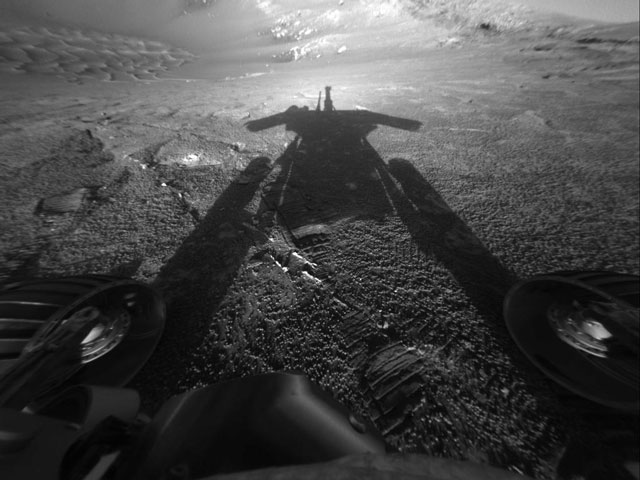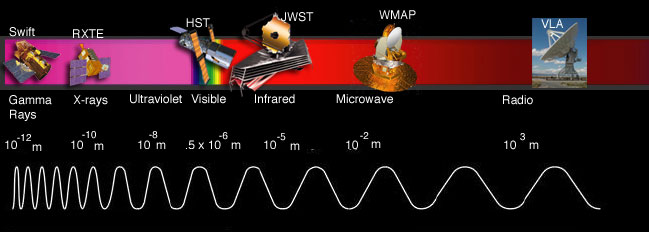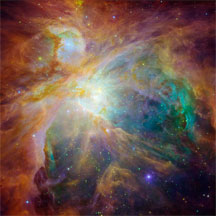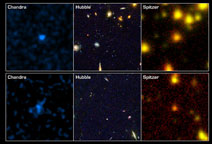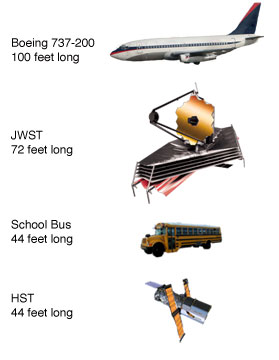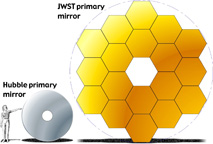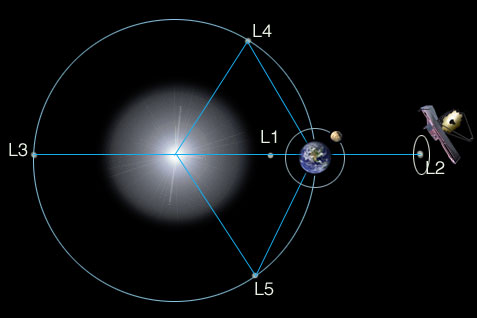NASA commissioned construction of an environmental simulation test chamber which was completed in 1964 at Johnson Space Center (JSC) in Houston, Texas. The facility, Chamber A, was invaluable for testing spacecraft and satellites before deployment to space. By testing spacecraft in an environment similar to the one they would be functioning in, potential problems could be addressed before launch.
A new addition to NASA's observatory inventory is called the James Webb Space Telescope (JWST), after a former Administrator of NASA. The new telescope will have seven times the mirror area of the Hubble, with a target destination approximately one million miles from earth. Scheduled for launch in 2013, the JWST will allow scientists the ability to see, for the first time, the first galaxies that formed in the early Universe. Pre-launch testing of JWST must be performed in environments that approximate its final target space environment as closely as possible.
The CommissionJSC's Chamber A will require modifications to accommodate testing of the JWST. Some of these changes involve upgrades to cryogenic, vacuum pumping, and structural elements. To accomplish this, JSC presented a need for a 3-D model of the chamber and the surrounding area in its current state. This effort will provide engineers an accurate facility representation to be used in identifying and correcting any conflicts in upgrade design and installation.
To accomplish such a feat, NASA looked to Houston engineering firm, Taylor and Hill, Inc., who has been providing engineering services to the oil, gas, chemicals and power industries since 1974. The firm qualified as a category finalist in the Houston Business Roundtable award for "Outstanding Safety Performance" for 2003 and 2004 and received previous awards for outstanding safety leadership from BP South Houston in 1996, 1997, and 1999.
The project scope entailed scanning and modeling all eight levels, two large staging areas, two mechanical rooms and liquid nitrogen piping and storage tanks comprising the chamber and the area surrounding it.
"We were hired to identify the major obstructions, clearances and open areas surrounding the test chamber," noted Glen Kearns, Taylor & Hill's Laser Scanning Department Manager and Project Manager over this job.
The information would be used to facilitate the planning of new piping, electrical conduit runs, cable trays and equipment upgrades for the 118ft. tall chamber.
ObstaclesThe project was marked high priority status by NASA, and therefore the measurements had to be completed in a timely manner. Construction and maintenance had already begun, which meant Taylor & Hill would be operating within a confined workspace.
Conventionally, engineers would gather the necessary data by using tape measures, photographs, and written notes to generate 2-D drawings. This would have been quite time consuming, obtrusive and open to error. "There would have always been the risk of overlooking something," Kearns stated.
Technology Suited for the JobTaylor & Hill employed a method known as Laser Scanning Metrology (LSM) to gather all the necessary measurements. LSM involves using high-speed computer-aided laser scanners to generate high-accuracy measurements that are digitally recorded for 2-D and 3-D modeling, inspection, visualization or reverse engineering. The practice has been useful for a variety of applications, ranging from documenting as-is conditions for accident reconstruction or building renovations to reverse engineering boat hulls to virtual asset management of power facilities.
Using the Laser Scanner LS from FARO Technologies, and a combination of modeling and CAD softwares, Rito Morales and Don Meyer of Taylor & Hill produced the requested deliverables ahead of schedule.
FARO's Laser Scanner LS operates via phase shift technology by emitting a beam from the instrument's laser sensor to a vertical mirror. The beam is then deflected onto the object or environment being scanned. This includes full horizontal 360 degree coverage and vertical 320 degree coverage within a distance of 76m (249ft.). Finally, the beam is diverted back to the laser scanner and the distance coordinates are digitally recorded via angular encoders that measure the rotation of the vertical mirror and horizontal axis of the laser scanner. These X, Y Z coordinates are computed at a rate of nearly 120,000 points per second. A scan at minimal resolution can be completed in less than a minute.
"The speed at which the data was collected with FARO's phase-based scanner is a major consideration," Kearns observed. "Traditional methods would have taken several weeks or months to collect the data we gathered in about ten days of scanning."
The resulting points produce a high resolution picture-quality image with a major advantagethe data is represented in 3-D. The image, also known as a point cloud, contains all the scanned coordinates. This allows operators not only to have an accurate representation of the physical appearances of the scanned items, but also to obtain useful measurements for inspection, analysis and modeling.
Taylor & Hill produced more than 170 point clouds from the data collected throughout the 10 days on the job site. Off-site, all laser scans were registered using FARO Scene point cloud software to a building coordinate system established through dimensional control.
From the registered point clouds, 3-D solid models were developed through INOVx 3-D PlantLINx® showing objects outside of the chamber: floors, columns, major equipment and large diameter piping. They also furnished a detailed model of the steel that makes up the roof structure. The 3-D model was then exported into AutoCAD where final presentation visuals were added. Surface finishes were applied and rendered images were generated complete with lights and shadows.
"Contractors responsible for the upgrades are now aware of the obstacles that may impede their plans," stated Kearns.
Software FocusFARO Scene is a high-performance and practical 3-D point cloud software tool designed for viewing, administrating and working on 3-D scan points from high-resolution 3-D laser scanners. This tool allows the user to manipulate raw 3-D scan points and acquire with analysis functions initial point-cloud data comprehension. Through data analysis and manipulation, scan points may be prepared for export into the user's operating platform as targets (.cor), scan points (.dxf, VRML, .igs, .pts, .ptx, .ptc), CAD objects (.igs, .dxf) or scan pictures (.jpg).
FARO Scene features:• Measures distances between objects
• Completes point cloud filtering, compression, noise reduction and registration
• Analyzes CAD models against point clouds to recognize collisions and deviations
• Models basic graphical objects such as planes, spheres, and cylinders from point clouds
3-D PlantLINx converts the output of laser scanning and survey data into accurate 3-D models of existing plants. This is achieved through the creation of physical databases consisting of analysis of laser scans, stereo photos and survey points captured during field data collection utilizing automated surface modeling or assisted primitive modeling. Based on the level of detail required for a specific project, 3-D PlantLINx databases can be composed of conceptual, single revamp, major revamp or intelligent models.
3-D PlantLINx features:• Processes laser images from most major laser scanning systems
• Rapid access to logical and complete regions of points
• Ability to customize or use industry standardized specifications for selected piping, structural steel and electrical elements
• User Defined customizable catalogs for complex assemblies, such as pumps, vessels, platforms, portable equipment, etc.
• Assisted 3-D modeling enables rapid creation of complete and accurate CAD geometry, including entire piping systems
• Structures 3-D models into userdefined conventions such as P&ID
• Roll based with optional concurrent user database access for increased modeling and QA/QC efficiency
Rito Morales is the CAD Support and Laser Scanning Specialist for Taylor & Hill, Inc. based in Houston, Texas. He has seven years of field experience with laser data collection in the petrochemical industry. A 1.956Mb PDF of this article as it appeared in the magazine—complete with images—is available by clicking HERE
